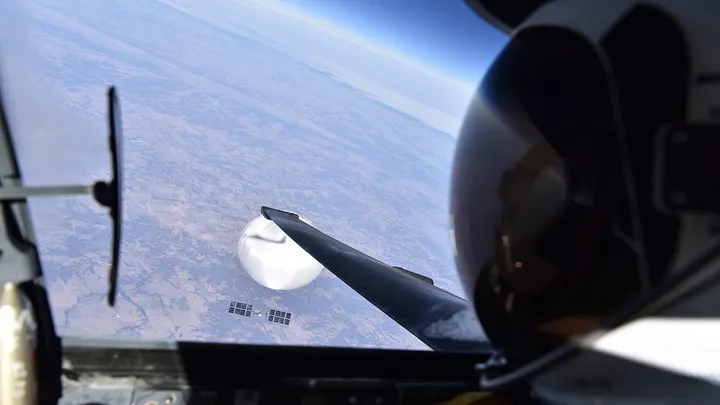US Intercepts High Altitude Hobby Balloon, China Spy Craft Incident
US Intercepts High Altitude Hobby Balloon, Easing Tensions Post-China Spy Craft Incident

Pentagon Intercepts 'Likely Hobby' Balloon Over US: Unraveling the Mystery
Discover the fascinating tale of a high altitude balloon intercepted over the US, deemed a 'likely hobby' craft by the Pentagon, shedding light on the nuances of aerial surveillance and the thin line between hobbyist activities and national security concerns.
In the serene skies above the United States, a recent event has captured the public's imagination and stirred memories of past controversies. The North American Aerospace Defense Command (NORAD), in a coordinated effort with the Federal Aviation Administration (FAA), has identified a high altitude balloon traversing the US airspace as a "likely hobby" craft. This identification comes approximately a year after a Chinese spy balloon saga that significantly strained diplomatic relations and sparked widespread concern over national security and surveillance practices.
Recent High Altitude Balloon Incident
According to NORAD's statement, the balloon, initially detected over Utah and moving east, was closely monitored via ground radars until it exited US airspace. This swift identification and response underscore the heightened alertness following last year's incident involving a Chinese surveillance balloon. Unlike its predecessor, this balloon was quickly classified as benign, attributed to an amateur balloonist, thereby alleviating any immediate threats to national security or aviation safety.
Distinction Between Hobby and Surveillance Balloons
The distinction between hobby balloons and surveillance balloons lies in their design, purpose, and the potential threat they pose. Hobby balloons, often launched by enthusiasts for recreational or educational purposes, are typically small, lack maneuverability, and carry minimal equipment. In contrast, surveillance balloons are equipped with advanced technology designed to collect and transmit data across vast distances, posing a significant challenge to national security.
The Chinese Spy Balloon Incident: A Recap
Reflecting on the previous year, the interception of a Chinese spy balloon marked a significant escalation in concerns over aerial surveillance. The balloon, which traversed from Alaska to the East Coast, was ultimately shot down over the Atlantic Ocean. This incident highlighted the sophisticated intelligence collection capabilities of such devices, prompting a reevaluation of airspace monitoring and defense strategies.
Safety Measures and Airspace Monitoring
In response to these challenges, NORAD and the FAA have reinforced their commitment to ensuring the safety of the nation's airspace. The recent incident demonstrated the effectiveness of these measures, with both organizations working in tandem to track, identify, and assess the potential threat of unidentified aerial objects.
For a comprehensive understanding of the evolving landscape of aerial surveillance and the intricate dance between hobbyist pursuits and national security, visit Kiksee Magazine at Kiksee-Magazine. This incident serves as a reminder of the delicate balance between fostering innovation and maintaining vigilance in the face of potential threats.
Exploring the World of High Altitude Balloons Further
To delve deeper into the world of high altitude balloons, their applications, and the broader implications for surveillance and security, readers are encouraged to explore external resources that offer additional perspectives. A prime example of such a resource is the Smithsonian National Air and Space Museum's extensive collection on aerial reconnaissance (Smithsonian National Air and Space Museum), providing a historical context and technical insight into these fascinating devices.
Conclusion
The interception of a "likely hobby" balloon over the US serves as a poignant reminder of the ever-evolving challenges and complexities surrounding aerial surveillance and national security. As we navigate this intricate landscape, the collaboration between governmental agencies, the dedication of amateur enthusiasts, and the informed engagement of the public will be crucial in maintaining a safe and secure airspace.
What's Your Reaction?






















